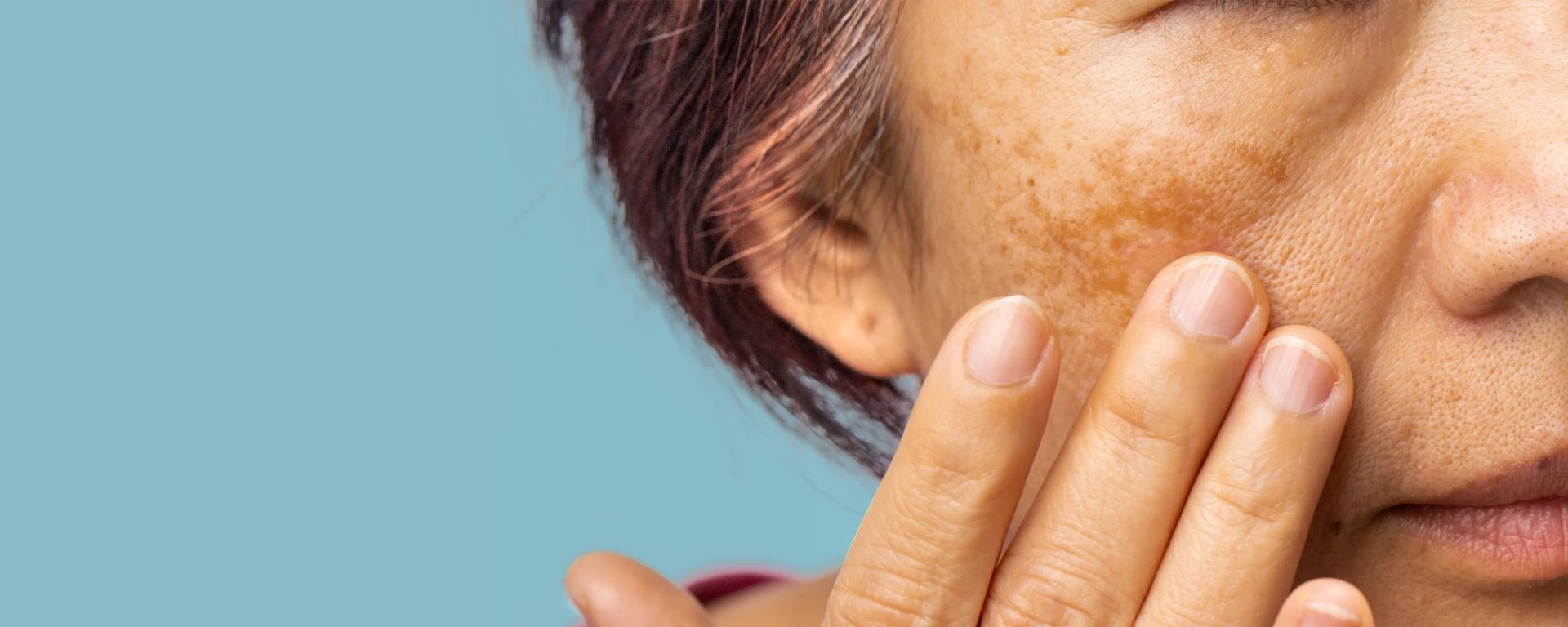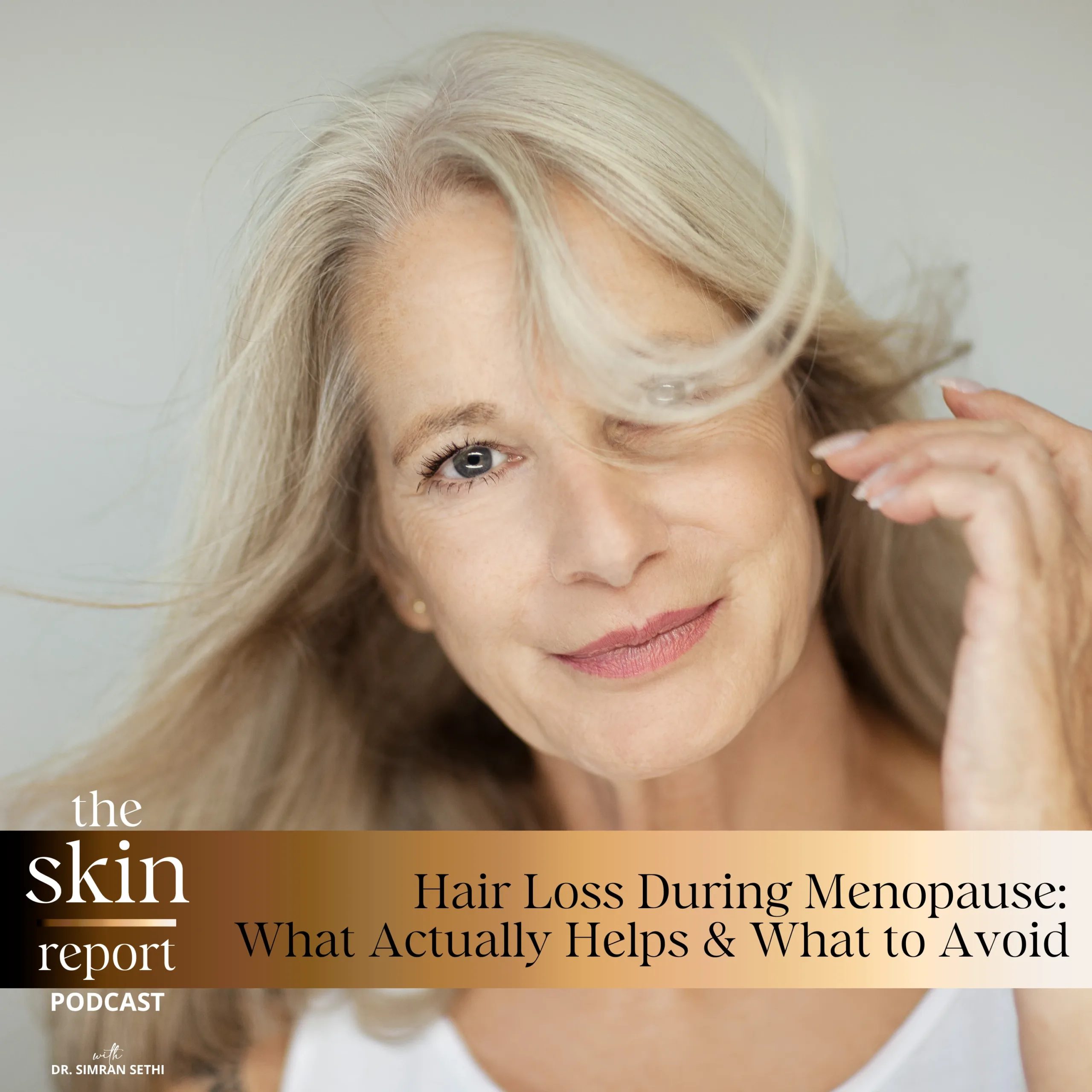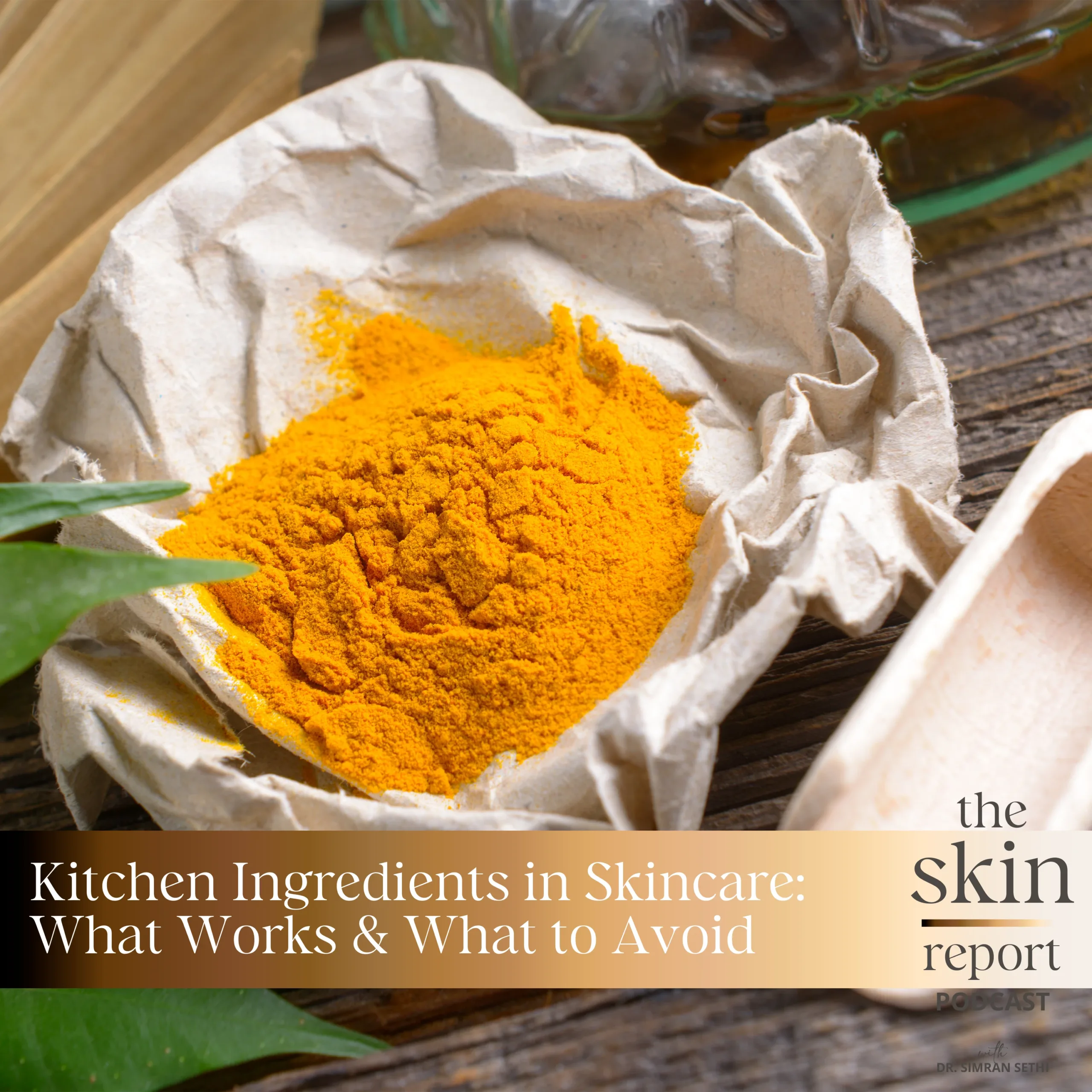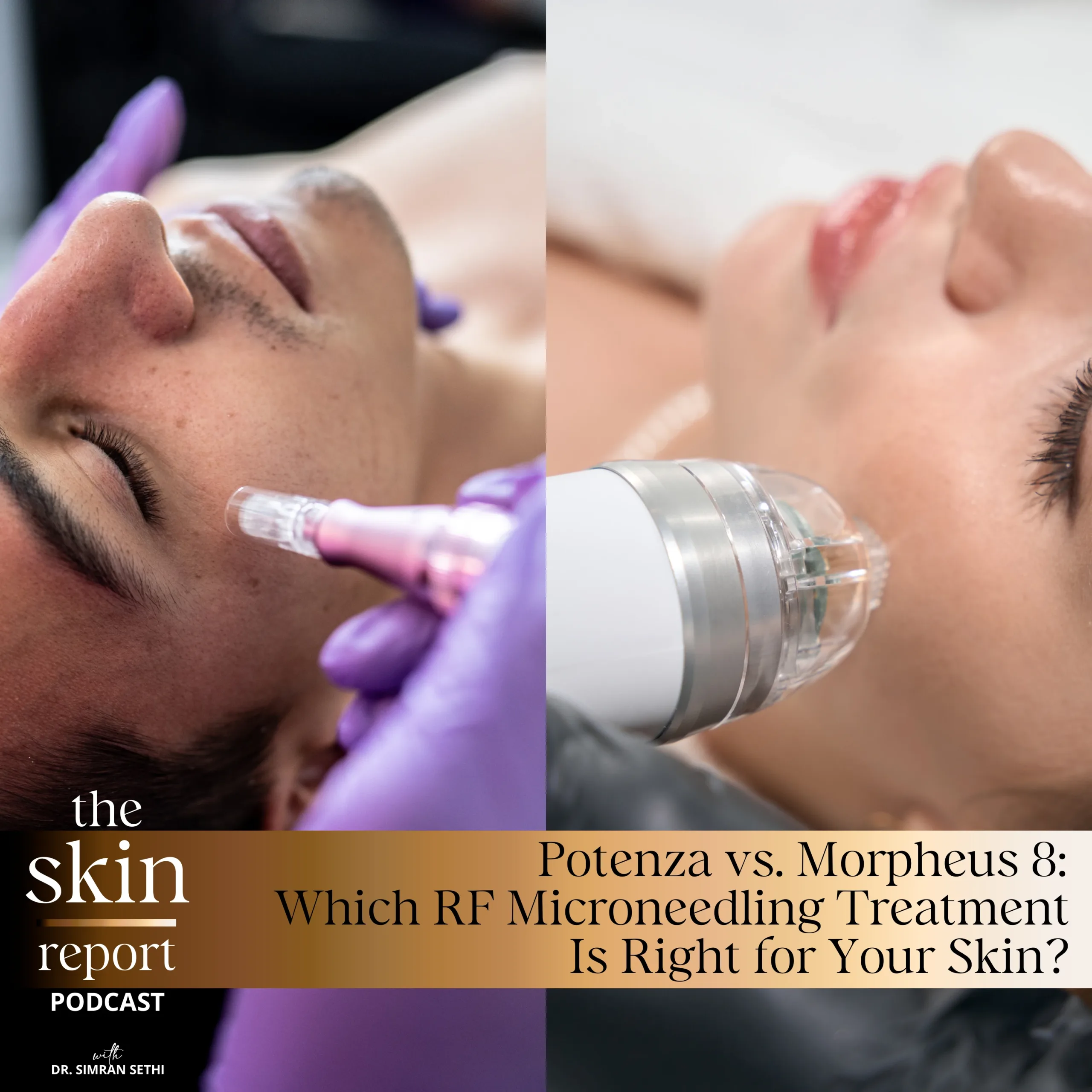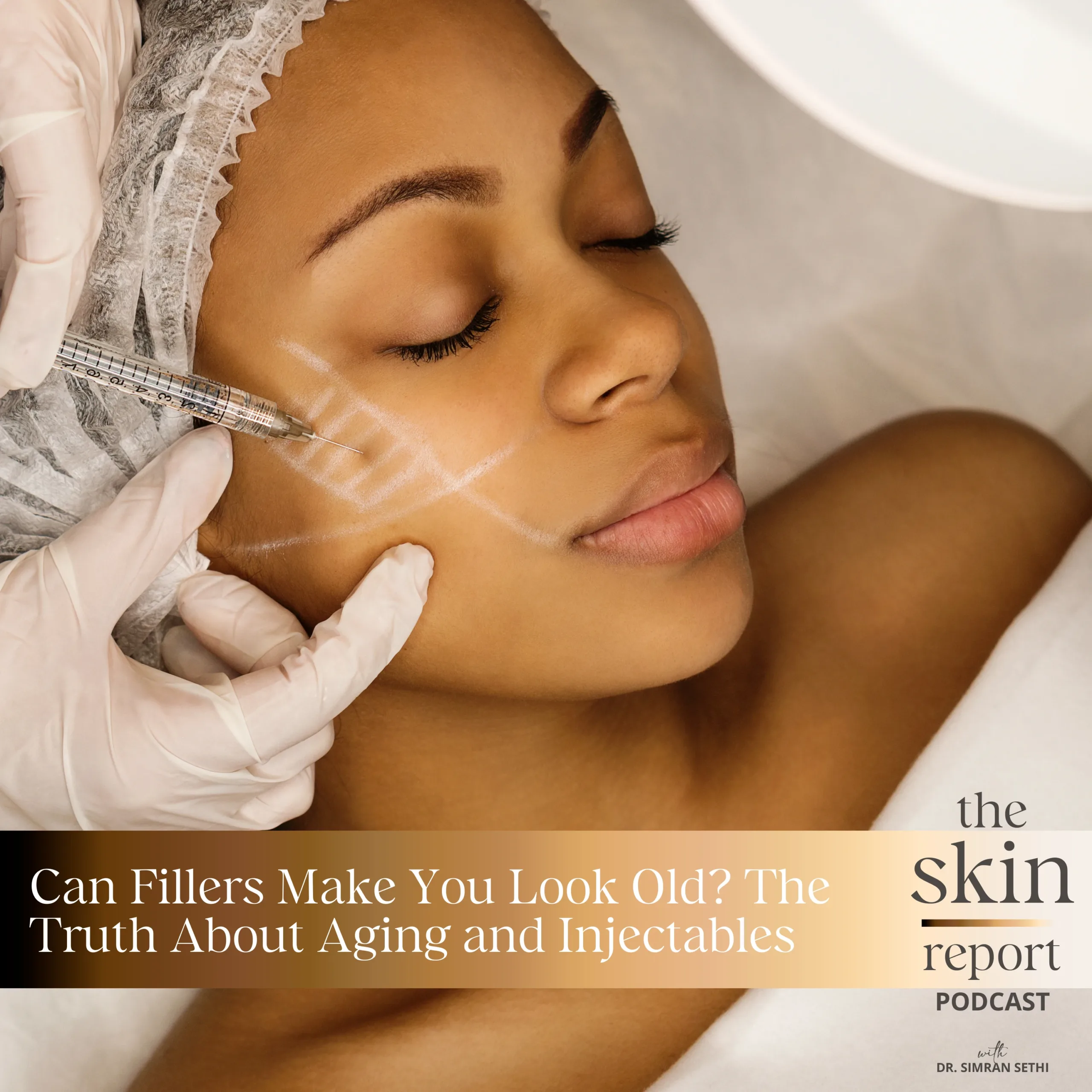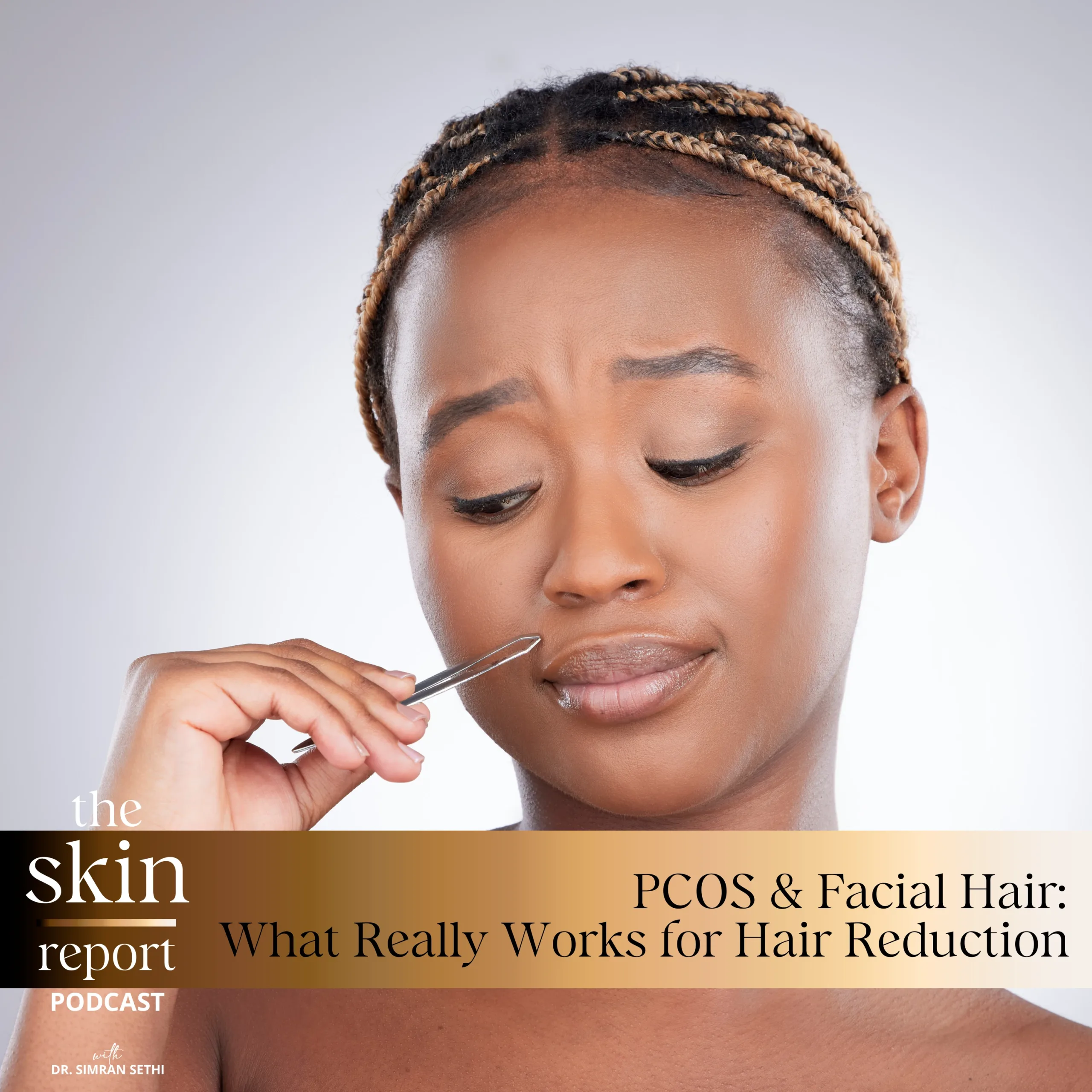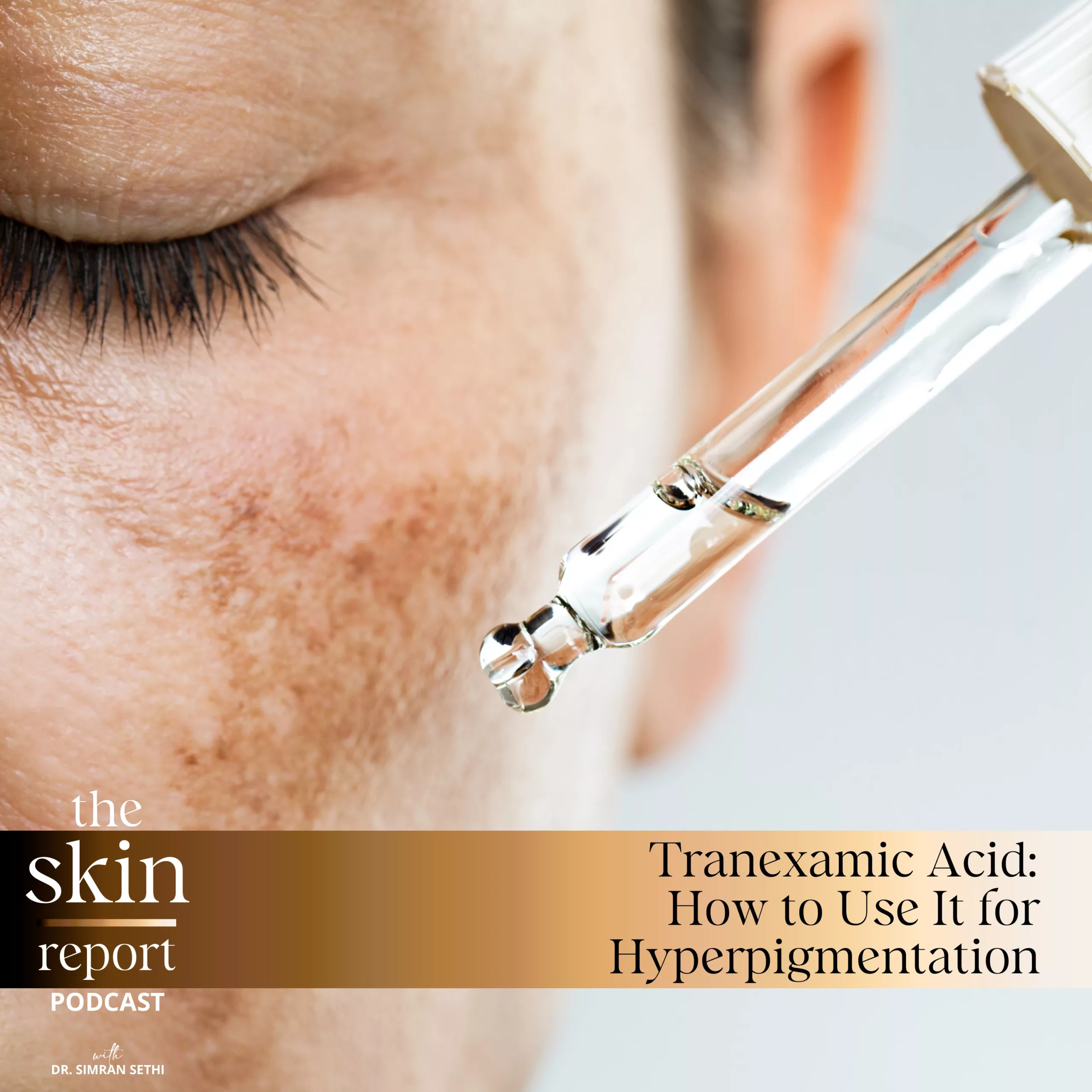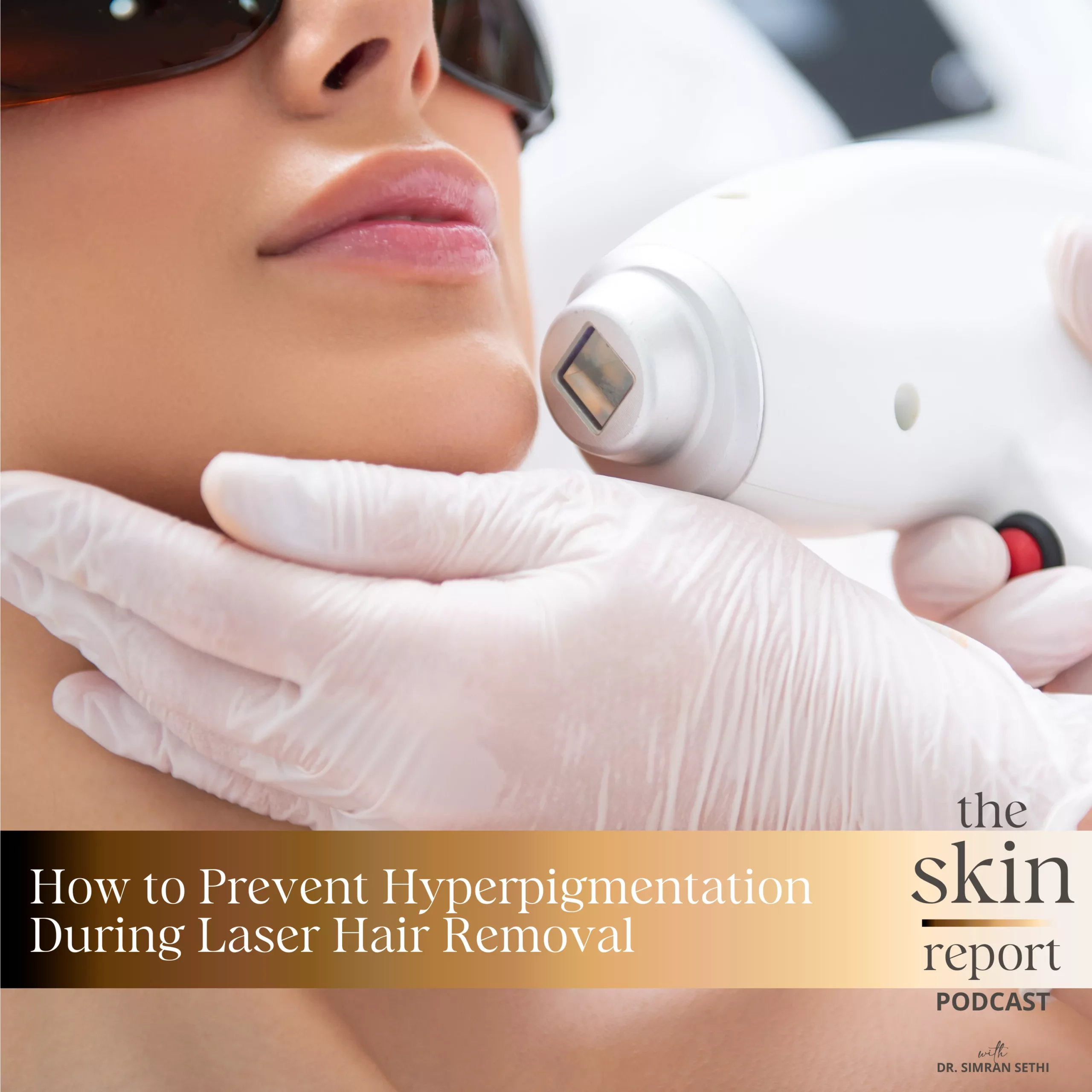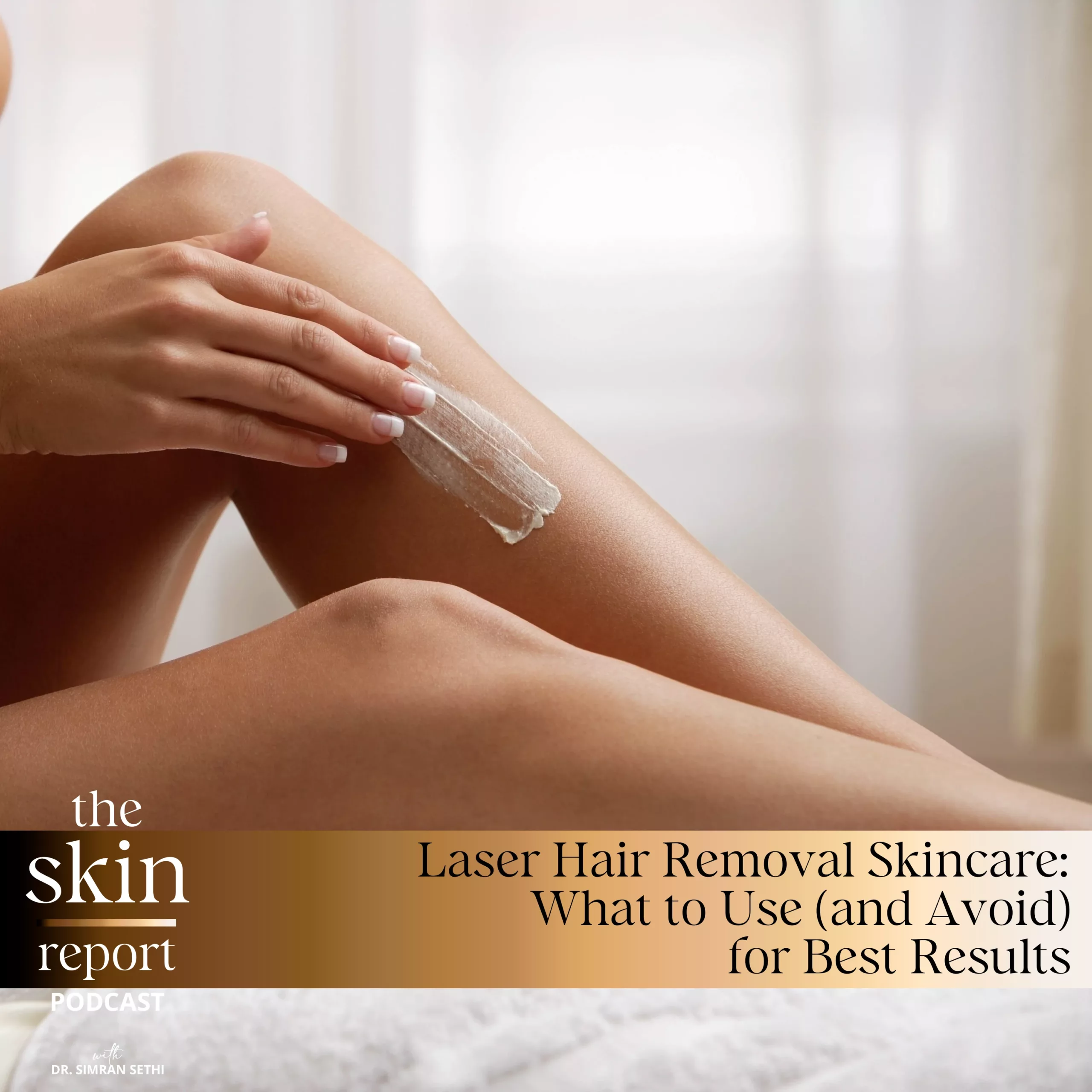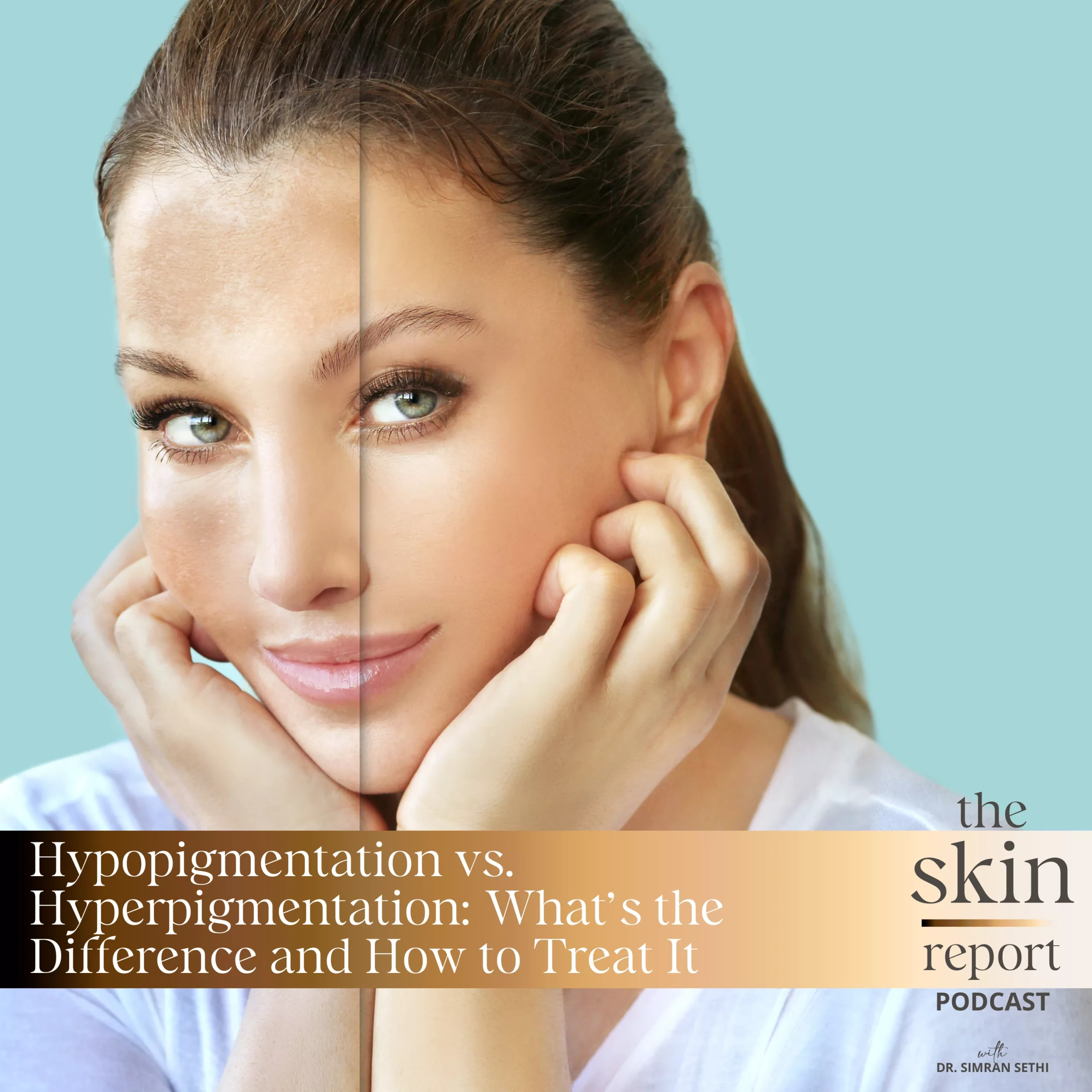Hello, everyone. I’m Dr. Sethi, and today we are going to talk about how to identify rosacea in darker skin tones. We’re not only going to talk about how to identify it, what causes it, but also how to treat it. Welcome to The Skin Report and let’s get started.
Rosacea is an inflammatory skin condition, which causes redness and flushing mostly in the nose and cheek area of the face. It is a condition that previously we thought was more common in lighter skin tones and almost non-existent in darker skin tones. But over time we now have more recognition of the fact that rosacea does exist in almost the same prevalence in darker skin tones as it does in lighter skin tones.
The reason why it’s previously been so underdiagnosed and honestly still continues to be underdiagnosed is because in lighter skin tones, rosacea can look very red, and it’s very obvious. In darker skin tones typically, rosacea doesn’t cause as much redness but leads to more hyperpigmentation. That’s why it’s often been confused as post-inflammatory hyperpigmentation.
When I usually see rosacea being diagnosed in darker skin tones, it’s when their rosacea is a lot more advanced and has a pustular breakout with a red base. Knowing how to identify rosacea as an aesthetic professional or just as a person with rosacea is important because if you don’t know what it is, you likely could go down a path with your skincare or skin treatments that are not appropriate.
Rosacea and darker skin tones typically appears as a mild flushing or hyperpigmentation in the nose and cheek area. If somebody has rosacea, they’ll notice that this condition or this hyperpigmentation tends to get warm and then become more a normal temperature throughout the day or throughout the months. After the flushing or that redness has gone down, typically there still is hyperpigmentation or brown spots in that area.
If the rosacea is in a flare-up or more advanced, you will start seeing a pustular, acne-like rash on the skin. But the reason why it is not acne or you know it’s not acne is because regular acne doesn’t have a red or pink base underneath it. The reason why rosacea is so important to identify is because a lot of people think it is either acne or melasma, and these are treated very differently.
Acne as a condition is inflammatory, but it is also very greasy and has an excess of sebum production. Imagine if you thought rosacea was acne, you are likely going to start using products that are suitable for people with acne that tend to be drying the skin out, they reduce sebum production, and that is definitely something you do not need in rosacea.
Melasma, sun damage, these are conditions that cause overproduction of pigment. They don’t have anything to do with inflammation. If you were to treat a person with rosacea how you treat somebody with melasma or post-inflammatory hyperpigmentation or sun damage, you are not going to address their inflammation, which again will not yield any results.
When addressing rosacea with skincare first, it’s important to build your skin barrier. The skin barrier is important because when you have any kind of inflammatory condition like rosacea, your body is almost busy addressing that inflammation and fighting inflammation, and it does not have time or energy to actually build your skin barrier. A broken skin barrier will only worsen your experience with rosacea, and in darker skin tones, it’ll only worsen the hyperpigmentation caused by it.
So, when you have rosacea, it’s important to replenish your skin barrier with a lipid-rich moisturizer. It’s also important to protect it with a hyaluronic acid serum so that you can protect the moisture in the skin barrier. And then third, it’s important to start a retinol. I know if you have rosacea, you are likely very scared to use a retinol because retinols are typically very drying and can increase inflammation, especially retinols in the form of tretinoin.
In my skincare line, I deliberately added phospho- and glycolipids to our retinol so that we can counteract the erythema and irritation caused by retinol, but still deliver that strong, medical-grade retinol, which would help build collagen and build back the integrity of the skin.
There are some skin treatments that are great for rosacea, and in that group, my favorite is a treatment called microneedling with skin-tox. Microneedling a hyper-dilute solution of Botox into the dermis of the skin, not into the facial muscles where we typically put Botox to stop movement of muscles, but into the dermis of the skin, so into the skin, will help stop that contraction and dilation of blood vessels that cause that flushing appearance and discomfort in rosacea.
This is a treatment that you do need to do every three to four months so that you can control that vasodilation and vasoconstriction or flushing in rosacea. And with the microneedling component of the treatment, you are also building back your skin barrier and your skin’s integrity.
We covered a lot about rosacea, which can be a little more problematic in darker skin tones because, (A.), it’s very poorly identified and, (B.), it can cause some permanent hyperpigmentation. There are some effective ways to address mild rosacea with skincare, and then a few more advanced cases with some skin treatments like microneedling with skin Botox.
If you have any questions about rosacea that we did not cover today, please leave it in the comments below. Otherwise, please remember to subscribe and turn on your notifications so that you always know when we release a new episode.

